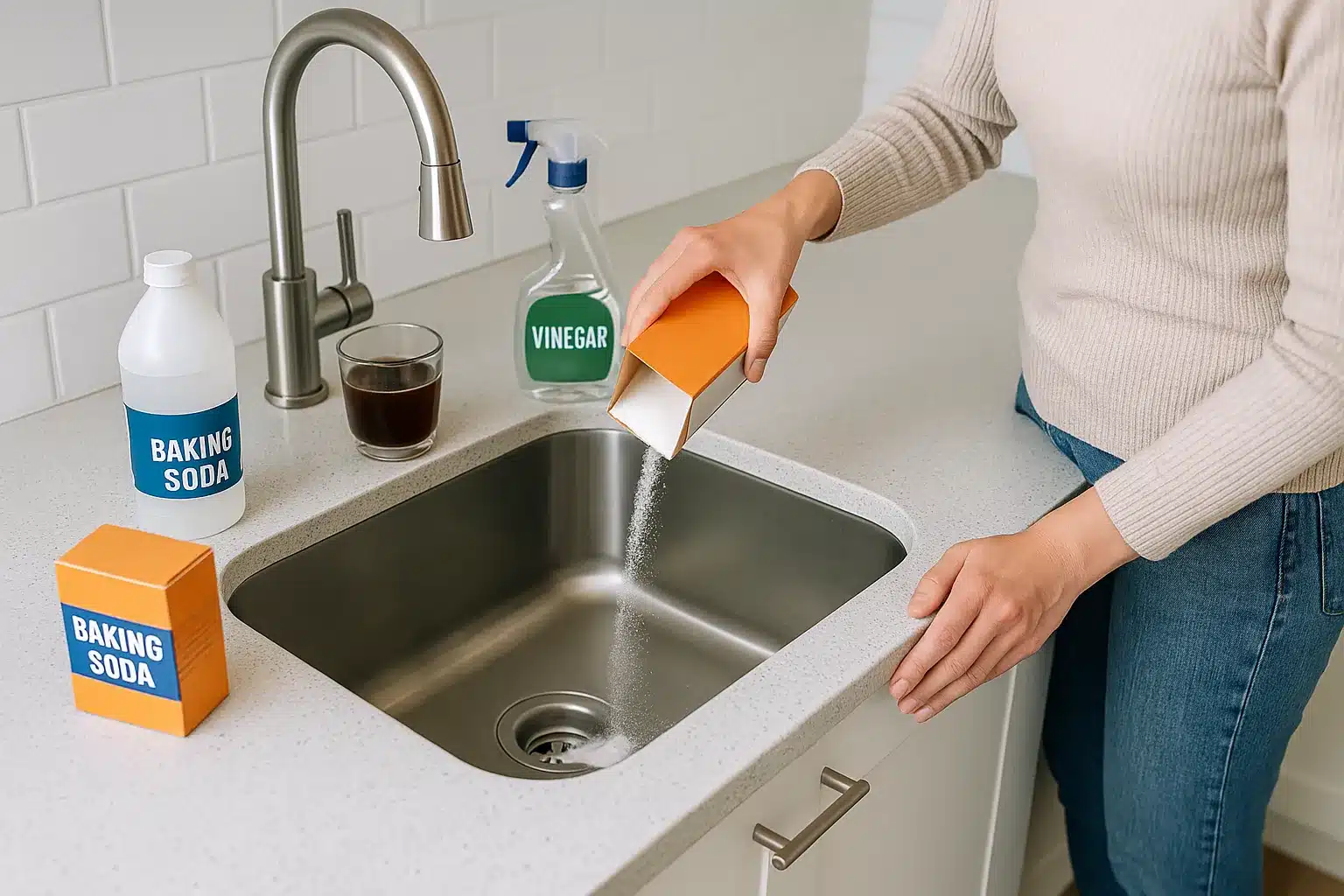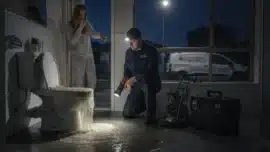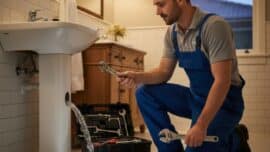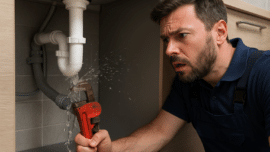
9 Tips for Clearing Blocked Drains Using Household Items
Blocked drains are a common issue in homes across Sydney and the Sutherland Shire. While calling a plumber is essential for serious or recurring blockages, many minor clogs can be fixed with everyday household items. If you’ve got a slow-draining sink, a smelly bathroom drain, or water pooling in the shower, these simple DIY tips can help you get things moving again, without needing harsh chemicals or specialist tools. Here are nine proven ways to clear a blocked drain using items you probably already have at home.
1. Pour Boiling Water Down the Drain
Boiling water is one of the easiest and most effective methods for minor clogs caused by grease, soap scum or conditioner. It’s particularly helpful in kitchen sinks and bathroom basins.
- Boil a full kettle of water
- Carefully pour it down the drain in two or three stages, waiting 10 seconds between each pour
- Rinse with hot tap water to check flow
- This method works best when the blockage is in the early stages. Avoid using boiling water on PVC pipes.
2. Use Bicarb Soda and Vinegar
This natural combination causes a fizzing reaction that helps dislodge soft clogs and remove odours. It’s a great solution for bathroom drains or sinks with slow drainage.
- Pour half a cup of bicarbonate of soda (baking soda) into the drain
- Follow with one cup of white vinegar
- Cover the drain and leave it for 15 minutes
- Rinse with hot water
- This is one of the most effective household methods used by Australian homeowners for eco-friendly drain cleaning.
3. Try Salt and Hot Water
If you don’t have vinegar, salt is a useful alternative for breaking down grime.
- Pour half a cup of table salt into the drain
- Follow with one litre of hot (not boiling) water
- Let it sit for 10–15 minutes, then flush with hot tap water
- This helps loosen minor blockages and can be repeated weekly as a preventive measure.
4. Use a Toilet Plunger
A toilet or sink plunger can be very effective for clearing clogs caused by hair, food particles or soap scum.
- Fill the basin or sink with enough water to cover the plunger
- Place the plunger over the drain and press down to create suction
- Plunge up and down rapidly for 15–30 seconds
- Check to see if the water begins to drain
- Use a flange plunger for toilets and a cup plunger for sinks.
5. Straighten a Wire Coat Hanger
A wire hanger can be turned into a makeshift drain snake for bathroom sinks and showers.
- Straighten the hanger and create a small hook at one end
- Carefully insert it into the drain and rotate to catch hair or gunk
- Pull it out and dispose of debris
- Flush with hot water to clear the rest
- This trick works particularly well in older homes in Sydney with metal grates or slow shower drainage.
6. Remove and Clean the U-Bend
If your kitchen sink is blocked, the trap (U-bend) may be holding food residue or grease.
- Place a bucket underneath the U-bend
- Unscrew the connections by hand or with a wrench
- Remove the trap and clean it thoroughly
- Reattach and test for leaks
- This is a reliable method for stubborn blockages near the sink outlet.
7. Use Dish Soap and Hot Water
Ideal for greasy blockages, especially in the kitchen sink.
- Squeeze a generous amount of dishwashing liquid into the drain
- Let it sit for five minutes
- Pour down boiling water to cut through the grease
- Repeat if the flow doesn’t improve right away.
8. Wet and Dry Vacuum
If you have a wet/dry shop vac, it can be used to suck out or blow through a clog.
- Set to wet mode
- Seal the hose over the drain using an old rag or plunger flange
- Run the vacuum on high for 20–30 seconds
- This method can dislodge stubborn clogs deeper in the pipe.
9. Regular Maintenance with Natural Cleaners
Prevention is just as important as removal. Regularly cleaning your drains with natural ingredients will help prevent future blockages.
- Once a month, pour half a cup of baking soda and vinegar down each drain
- Flush with hot water
- Install strainers on all bathroom and kitchen drains to catch debris
For a full inspection or recurring problems, contact our Blocked Drains experts servicing Sutherland Shire and surrounding Sydney suburbs.
What Not to Use
Avoid chemical drain cleaners, especially in older homes. These can:
- Damage PVC or galvanised steel pipes
- Kill helpful bacteria in septic systems
- Create fumes that are unsafe in enclosed spaces
- If your DIY efforts haven’t worked after one or two attempts, don’t continue trying. You could make the blockage worse.
When to Call a Professional
Some blockages are too stubborn or too deep for home methods. Contact SE Plumbing if:
- You have tried more than one DIY method without success
- The water is backing up in multiple drains
- The clog returns shortly after clearing
- You hear gurgling or smell sewage from your drains
Our Emergency Plumbing service is available 24/7 across Sutherland Shire.
Why Choose SE Plumbing
With over 20 years of experience, SE Plumbing has built a reputation for fast, reliable and affordable blocked drain solutions in Sutherland Shire. We combine expert knowledge with the latest drain inspection and clearing tools, including:
- CCTV drain cameras for accurate diagnosis
- Hydro jetting to clear stubborn clogs without damage
- Licensed, friendly local plumbers
- No hidden costs, just honest pricing
Need help now? Call us on 0414 651 351 or book online.
Call SE Plumbing for Emergency Drain Help in Sutherland Shire
Clearing a blocked drain doesn’t always require a plumber, sometimes, a bit of boiling water or bicarb soda is all it takes. These nine DIY tips are cost-effective, eco-friendly, and practical for any Sydney household. But when your efforts aren’t enough, SE Plumbing is here to help. Our trusted team in Sutherland Shire is just a phone call away.



